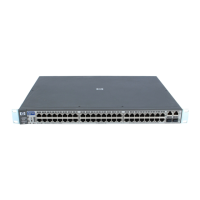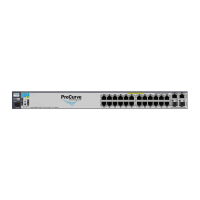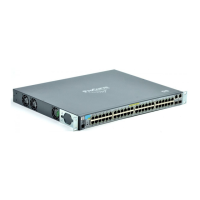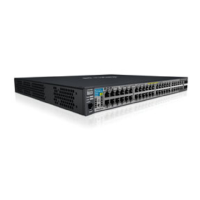15-6
IP Routing Features
Overview of IP Routing
IP Interface Parameters for Routing Switches
Table 15-2 lists the interface-level IP parameters for routing switches.
Table 15-2. IP Interface Parameters – Routing Switches
ICMP Router
Discovery
Protocol
(IRDP)
An IP protocol that a router can use to advertise the IP addresses of its
router interfaces to directly attached hosts. You can enable or disable the
protocol at the Global CLI Config level.
You also can enable or disable IRDP and configure the following protocol
parameters on an individual VLAN interface basis at the VLAN Interface
CLI Config level.
• Forwarding method (broadcast or multicast)
• Hold time
• Maximum advertisement interval
• Minimum advertisement interval
• Router preference level
Disabled 15-17
15-18
Static route An IP route you place in the IP route table. No entries 15-13
Default
network route
The router uses the default network route if the IP route table does not
contain a route to the destination. For the Series 5300XL Switches, enter
an explicit default route (0.0.0.0 0.0.0.0 or 0.0.0.0/0) as a static route in the
IP route table.
None
configured
15-15
Parameter Description Default See page
Parameter Description Default See page
IP address A Layer 3 network interface address; separate IP
addresses on individual VLAN interfaces.
None configured chapter 7
ICMP Router
Discovery
Protocol (IRDP)
Locally overrides the global IRDP settings. See table
15-1 on page 15-5 for global IRDP information.
Disabled 15-18
IP helper address The IP address of a UDP application server (such as a
BootP or DHCP server) or a directed broadcast
address. IP helper addresses allow the routing switch
to forward requests for certain UDP applications from
a client on one sub-net to a server on another sub-net.
None configured 15-21
!Software.book Page 6 Thursday, October 10, 2002 6:10 PM

